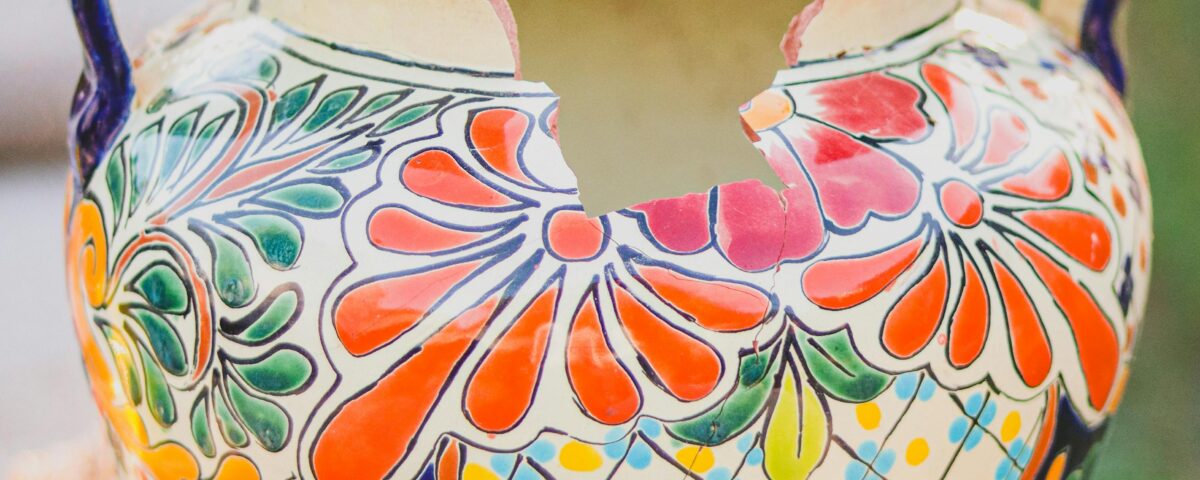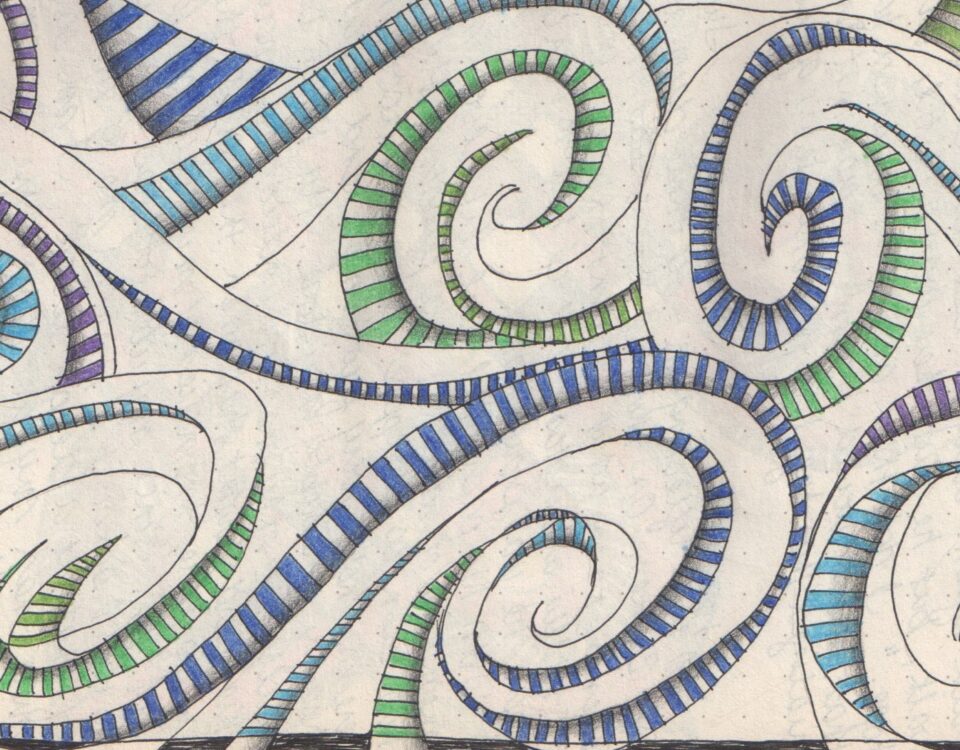
Broken Pottery
September 21, 2025An experience in Mumbai have started me down the road of re-thinking my broken pottery metaphor (see Broken Pottery). I must say, it felt great to imagine myself getting more beautiful, tall, and elegant. Yet, that doesn’t seem to match my aging reality. Not entirely wrong, the metaphor served as a guiding image in my life for over 20 years. In the face of culture shock and physical disability, I needed the hopeful feeling of progress and direction. I needed to know that facing my brokenness — actually working on it — was fruitful, even as my body seemed to decline in function.
With the landmark age of 50 just a few quick years down the road, God is providing a new spin on the broken pottery metaphor. Recently, my daughter Isabel and I traveled 2 hours to Navi Mumbai for an arts workshop led by Makoto Fujimura. With his wife Haejin, he volunteers time each year to a home of refuge for children growing up in a major slum of Mumbai. Many are the children of prostitutes who have very little hope of a different future unless something major changes in their lives. Sahasee Embers, a safe house on the edge of the slum led by a local pastor, provides daily meals, education, and a healthy after-school environment. One by one, step by step, lives are changing.
The increasing prevalence of slum communities in India and around the world represents the brokenness of humanity with dismaying accuracy. We don’t have to look hard to find shattered humans. There are so many, it seems much easier to just sweep them away, toss them in the waste bin, and enjoy our tidy cities. Fujimura challenged us to think differently about this brokenness and the fragmentation of our own lives by teaching us a modified form of the ancient Japanese kintsugi art form.
In ancient Japan, when an exquisite piece of pottery broke, the family held on to the broken pieces, keeping them safe until a kintsugi master was located and deemed worthy of repairing the treasured family heirloom. Sometimes the broken pieces were kept for generations awaiting the perfect master to repair them. Fujimura, gazing with his trained eyes at a shard in his knowing fingers, explained that the first step in the restoration process is “beholding the brokenness.” Looking at it, examining it, beholding it with respect. The fragment of pottery in his hand forms its own shape, has its own curves, and holds its own beauty—a beauty only apparent to the eye of the beholder.
With the other workshop participants, Isabel and I were led through the process of gluing the pieces of our broken mugs back together, sealing the seams with putty, meditatively sanding the putty until it felt smooth, then covering it with a lacquer made golden with copper dust. The resulting piece of art, reformed by a few hours of our tender attention, looks quite different from the original, fully functioning mug. The repair is not skillfully disguised but accentuated. This new one may not ever be able to hold our morning coffee, but the time spent repairing and beautifying taught each of us important lessons. In the traditional kintsugi craft, the resulting object is far more valuable due to the amount of expensive Japanese lacquer and real gold dust used.
Hang on with me: this is where it gets interesting.
As my daughter and I left the facility to head home with our heads full of new ideas, the cloth bag holding our fragile works of art got knocked against a hard surface.
My newly restored mug was immediately broken! The handle, now in three pieces, would need time, attention, and a visionary view that could see potential rather than the new fractures.
Utilitarian me was ready to toss it into the garbage. The kintsugi lesson was in my head. Isn’t that enough? Before disposing of the frustration and the newly formed waste, a light bulb moment hit my pea-sized brain.
What if I was not transformed into a brand-new vessel each time my life was broken? My previous life metaphor supposed that after each shattering, a more beautiful, bigger vessel was refashioned by God.
What if I was the same simple vessel broken over and over and then repaired over and over?
The first breaking and golden repair seems poignant and beautiful, but what if the same mug was smashed again, repaired again, shattered again, repaired again? What then? How many times was it worth it to fix the same old mug? More and more cracks seem shameful and seem to represent the fact that I can’t stay healthy even after all the repair work that has gone into my life.
But the kintsugi way sees this differently. More cracks represent more opportunities for beauty. More fissures require a more skillful craftsman to take on the project. More breakage represents more space for lacquer and gold. If broken enough, the entire vessel would be composed of precious metals. None of the original material would remain. That’s an interesting thought…maybe even biblical!
“And we all, who with unveiled faces
contemplate the Lord’s glory,
are being transformed into his image
with ever-increasing glory,
which comes from the Lord, who is the Spirit.”
2 Cor. 3:18

To be honest with you, my dear readers, I need help wanting this. I highly value function, ease and usefulness — to the point where I spend time feeling jealous of my Indian friends who can squat and wash their clothes by hand! Trusting God that I’m valuable despite my increasing physical dysfunction challenges the way I see the world, because, the fact is, that I don’t always do so good at valuing others who are as broken as me. I don’t even notice the broken humanity around me, let alone see their value as our loving Father does.
However, I’m going to keep working on this.
How can we create art and live our lives in such a way as to represent this dramatic increase in value that comes when brokenness is repaired…even if it does not lead to an increase in function?


